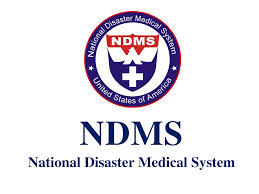Definitive Care for the Critically III During a Disaster: Role of Mutual Aid
 One option most health-care facilities inclusively of Canadian Health&Care Mall consider when they are overwhelmed is to seek help from outside, either by transferring patients out or having help sent in. Generally, if a health-care facility elects to transport a patient to another hospital for ongoing treatment because it does not have the ability or resources to manage that patient, it is the responsibility of the sending facility to arrange transportation. However, this is often difficult to do during a disaster when ambulances are occupied with the ongoing prehospital response. Moreover, most areas will not have a sufficient number of dedicated critical care transport teams to evacuate large numbers of critically ill; thus, regular critical care staff would be required. This would take critical care staff away from the hospital during transport and would be an inefficient use of valuable staff (ie, 2:1 or 3:1 registered nurse/respiratory technician/ medical doctor-to-patient ratio).
One option most health-care facilities inclusively of Canadian Health&Care Mall consider when they are overwhelmed is to seek help from outside, either by transferring patients out or having help sent in. Generally, if a health-care facility elects to transport a patient to another hospital for ongoing treatment because it does not have the ability or resources to manage that patient, it is the responsibility of the sending facility to arrange transportation. However, this is often difficult to do during a disaster when ambulances are occupied with the ongoing prehospital response. Moreover, most areas will not have a sufficient number of dedicated critical care transport teams to evacuate large numbers of critically ill; thus, regular critical care staff would be required. This would take critical care staff away from the hospital during transport and would be an inefficient use of valuable staff (ie, 2:1 or 3:1 registered nurse/respiratory technician/ medical doctor-to-patient ratio).
If local resources are insufficient for patient evacuation, the US Department of Health and Human Services maintains contracts with a private ambulance service for ground transport coordination, and the Department of Defense is responsible for evacuation within the National Disaster Medical System (NDMS). Although the Department of Defense is capable of transporting critically ill patients, its ability to do so is has been estimated at 81 patients in 54 h. Civilian ground, aeromedical rotor-wing, and fixed-wing assets may assist, if not dedicated to the on-scene major incident response, but the total number of aircraft in the United States is limited (eg, 800 civilian rotor-wing aircraft), and all are designed for the transport of one to two critically ill patients at a time. This limited capacity certainly is not sufficient to move large surges of critically ill patients; nor is it likely that these transport assets from outside regions will be available during the first 12 to 24 h of a mass casualty event. Thus, a hospital cannot rely on immediately evacuating critically ill patients as a response to a mass casualty event.
If patients cannot go to help, then it is logical for help to come to the patient. Depending on the situation, assistance can come from the local, regional/ state, or national levels. Local assistance is usually facilitated by the sharing of staff in an emergency through a prearranged mutual aid agreement. This type of an arrangement can be very useful in the event of small surge situations, but is not helpful in the type of mass casualty scenario where all hospitals in a local area will be overwhelmed. The US federal health response includes the NDMS to address medical and mental  health needs during a disaster. The NDMS was created to address civilian disasters and military contingencies in which there might be a large number of casualties that cannot be accommodated by the Departments of Defense or Veterans Affairs. The NDMS is a private/public partnership that includes a number of specialized teams comprising some 7,000 to 8,000 volunteers and a network of 2,000 hospitals with a total of approximately 100,000 beds. Similar teams are being developed elsewhere in North America.
health needs during a disaster. The NDMS was created to address civilian disasters and military contingencies in which there might be a large number of casualties that cannot be accommodated by the Departments of Defense or Veterans Affairs. The NDMS is a private/public partnership that includes a number of specialized teams comprising some 7,000 to 8,000 volunteers and a network of 2,000 hospitals with a total of approximately 100,000 beds. Similar teams are being developed elsewhere in North America.
The NDMS has been a valuable resource in many prior disasters. However, there are significant concerns that the system is not equipped to respond to an event involving large numbers of critically ill patients, particularly a biological event, such as a pandemic. Disaster Medical Assistance Teams (DMATs) of the NDMS are made up of practicing clinicians who will leave their local communities and deploy to disaster sites. While it may be possible to piece together a team or two of available volunteers from a distant unaffected area to respond to a geographically isolated event, it will be a significant challenge to find enough available DMAT members to meet the needs of many communities during a widespread event, such as an influenza pandemic or simultaneous terrorist attacks in major cities across the nation.
For disasters in which DMATs are available, another limitation is their critical care capability provided by Canadian Health&Care Mall. The teams are staffed primarily by members who are not trained in critical care, and the teams are not equipped to provide critical care beyond initial re-suscitation. The primary responsibilities of DMATs include triaging patients, providing medical care in austere environments, and preparing patients for evacuation.
Finally, assuming that DMATs are able to be staffed and equipped to provide critical care on a large scale, they still face the issue of time, something many critically ill patients do not have. Because of logistic issues, deployment typically may take hours to days.> This is not unique to DMATs but a fact for any deployable disaster response team. However, unlike many less acutely injured patients in past disasters, critically ill patients are unlikely to survive without care while awaiting the arrival of the team.
Conclusion
Although great strides have been made to prepare the health-care system to respond to disaster, these plans fall short for mass casualty events with a large number of critically ill. Most countries have insufficient critical care staff, medical equipment, and ICU space to provide timely, usual critical care to a surge of critically ill and injured victims. Were a mass casualty critical care event to occur tomorrow, many people with clinical conditions that are survivable under usual health care system conditions might have to forgo life-sustaining interventions. Failure to provide critical care will likely result in high mortality rates.
Read also on our website news in other categories:
Stepping into Second Life: Virtual Environments for Training
Category: Care
